Rediscover the wonders of the past during a weekend in Rango
A gateway to the Brenta Dolomites and one of the most beautiful villages in Italy
- 2 days
- March, April, May, June, July, August, September, October
- Art and Culture, Taste
You are bound to feel at home as soon as you get to Rango, which lies halfway between Lake Garda and Madonna di Campiglio. Everything in the village seems designed to offer respite to travellers, including the narrow streets and passageways between the closely huddled stone and wooden houses, the barrel vaults (known here as “portech”) that offer shelter from cold winter weather and blazing summer sunshine, and the large fountain in the square where you can stop for a rest and some refreshment.
All of this stems from its history. Part of the Municipality of Bleggio Superiore, today Rango is a village full of rural appeal but it was once a crucial crossroads on the “Via Imperiale”: a road followed by merchants, pilgrims and shepherds with their flocks, who would stop for a break here. It is the ideal place to relax in natural surroundings, taking it slowly and stopping to rediscover and savour little things like walking through the meadows, strolling around the village and eating a slice of cake, maybe with the famous Bleggio walnuts from the local area.
Rango has been named one of the most beautiful villages in Italy by the Borghi Più Belli d’Italia association and when you read our suggestions for a two-day break, you will see why.
First day: Exploring Rango
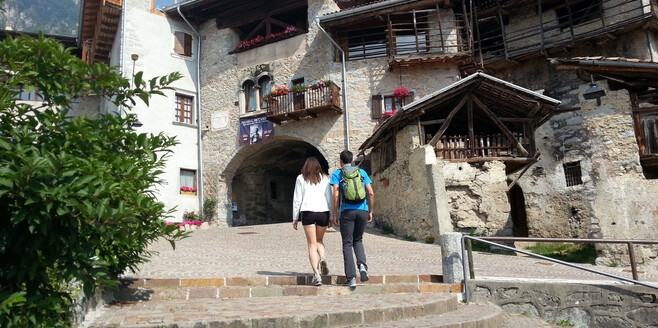
The first thing that we would advise you to do when you get here is take a stroll through the narrow streets of the village. On your way into Rango, you will have noticed a graceful double lancet window. It has been there since Renaissance times, when it was on a trade route linking the Val Giudicarie to the lake harbour in Riva del Garda and the Republic of Venice. Another thing that you are bound to have noticed is the black outlines around many of the windows. Until a few decades ago, many homes did not have chimneys, so the smoke from their fires went out through the windows.
No tour of the village would be complete without a stop to admire the right-angled shape of the fountain in the square, where herds of animals were once taken to drink and people got the water to put out fires, and the Church of Santa Lucia.
First day: Murals and witches in Balbido
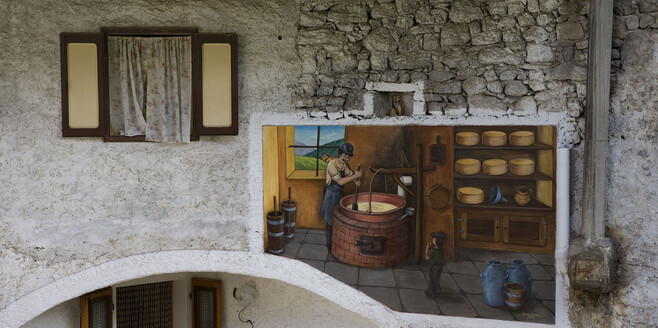
It takes just a few minutes to walk from Rango to Balbido, which has earned the nickname the “Painted Village” because it is famous for the colourful murals adorning its houses. Among the many subjects depicted are trades of the past, ancient customs, emigration, horses and witches. There are many legends in the village about the latter, which are known in the local dialect as “le strie”.
At the entrance to the village, there is a huge witch made of wood and bamboo canes, complete with a cauldron for casting spells. Standing 10.77 metres tall, she holds the Guinness World Record as the “Biggest Witch in the World”!
First day: A leisurely walk in the natural world
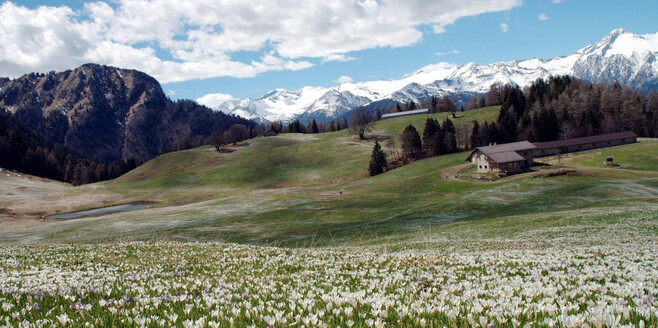
If you have managed to escape from the wicked witch of Balbido, you are probably feeling ready for a lovely walk in natural surroundings. We have two to recommend. They are rather different from each other, but they are both great.
The first is the Sentiero della Noce, which takes a look back at the history of one of the most important products from Rango: Bleggio walnuts, which are used in lots of delicious local recipes and are now protected under the Slow Food Presidia scheme. This gentle, relaxing stroll takes in rural villages, country roads, meadows and fields full of crops.
The second option presents a wonderful opportunity to discover the natural environment. It is more challenging and takes almost six hours in total, so make sure you are fully equipped with hiking boots, water bottles and waterproof jackets in case it rains or gets cold. If you go all of the way to the end then you will reach Cima Sèra, where there are amazing views of the Trentino mountains. However, you can also choose to stop at Malga Stabio for lunch and then head back to the village from there.
Old workshops and traditional dishes in Rango
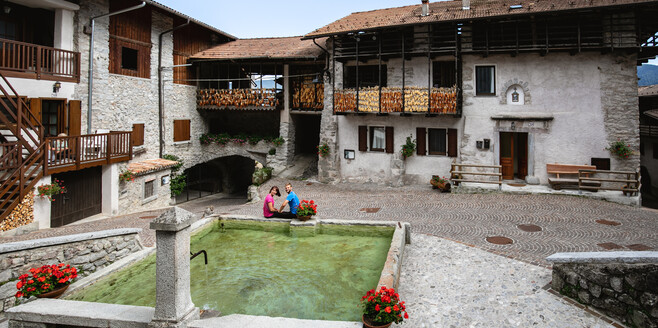
Now it is time to take a delightful stroll around the village. Every winter, Rango plays host to one of the top “Christmas Markets” in Trentino.
If you would try some culinary delights to remind you of your stay, you can choose between the Panificio Riccadonna, a bakery that is famous for the walnut cake that it bakes in a wood-fired oven, and the Salumificio Parisi. If you would like to find out more about Bleggio walnuts, go to the Azienda Agricola Il Noce in Cavrasto, which is just outside the village. It is a specialist purveyor of walnuts and walnut-based products, such as walnut oil, pesto, biscuits and cakes.
First day: Try the famous Bleggio walnuts at dinner
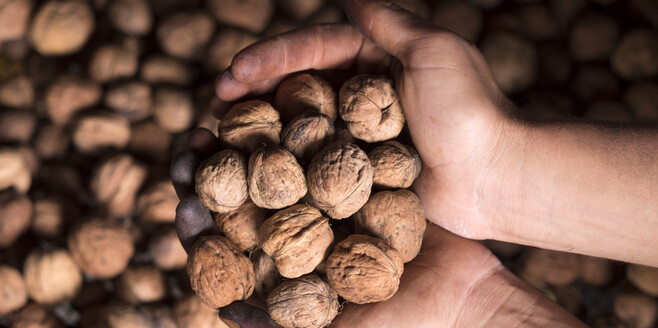
You are bound to have worked up an appetite wandering around the food shops and no doubt you would like to try Bleggio walnuts, which are famous for their distinctive elongated shapes, thin shells and pleasant flavours, with original spicy notes.
It is time for dinner! The Ristorante Catenaccio in the heart of Rango is located in what was once the biggest stable in the village. As soon as you walk through the door, you will be in a world full of traditional Trentino cuisine, with dishes including Knödel (canederli), carne salada, polenta, Arctic char, and game. Afterwards, what better way could there be to round it all off than with a slice of Bleggio walnut cake?
Second day: Exploring the area around Rango
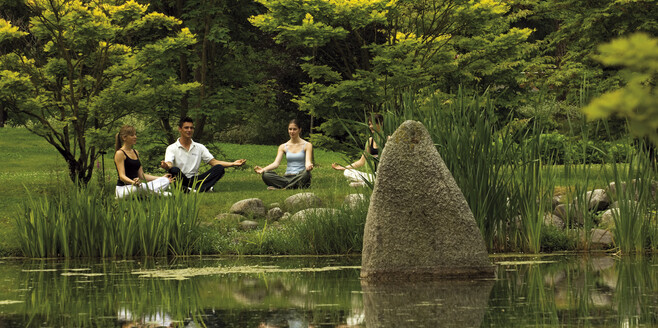
Before you go home, there are still lots of things to see in the area around Rango. If you would like to relax in natural surroundings and enjoy an original, revitalizing experience, we recommend the new Sensory Trail at the Parco delle Terme di Comano, which features a number of Natural Wellness activities including barefoot walks, forest bathing and Qi Gong. Alternatively, pick a “Thermal Spa” package at the Grand Hotel Terme di Comano.
If you are more of a history buff, you can choose between a trip to the pile dwellings museum in Fiavè, which is on the edge of the UNESCO World Heritage Site archaeological park, and a look around the Castello di Stenico. The latter was once owned by the Prince-Bishops of Trent and it now contains 16th and 18th century paintings, collections of cold weapons and firearms, and furniture from the 16th to 19th centuries.



